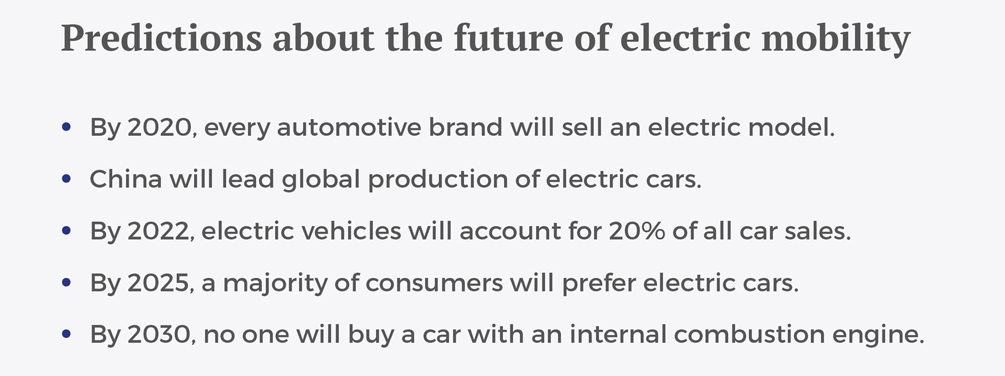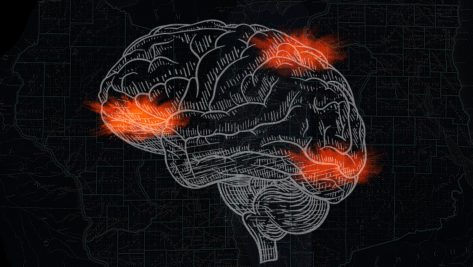Although progress varies by country, the electric-vehicle industry is developing worldwide, thanks to the involvement of numerous players. Beyond the efforts of auto manufacturers and energy companies, the shift to electric cars requires a new mindset on the part of authorities, lawmakers, and consumers. Indeed, the next decade will be crucial for efforts to definitively launch this new mobility concept, which represents a key step towards economic sustainability and an ideal complement for smart cities.
This period of innovation will be characterized by geopolitical tensions that will directly impact the automotive industry, which understands that the shift to electric cars is unstoppable. Automotive stock prices provide the first hint of what’s to come. Classic manufacturers with more than a century in the business—General Motors, Ford, Fiat, etc.—have been surpassed by companies like Tesla, which was born with an electric philosophy just over a decade ago and now offers self-driving models. Elon Musk’s firm has outdone companies with a 100-year track record and is fostering a paradigm shift in vehicle consumption—not unlike what has happened in retail since the advent of Amazon.
The next decade will be crucial for efforts to definitively launch this new mobility concept, which represents a key step towards economic sustainability and an ideal complement for smart cities.
Electric vehicles seem new… but they aren’t
The electric car didn’t begin with Tesla. Today’s electric vehicles have their roots in models and patents that date back to the 19th and 20th centuries.
The first electric car appeared in 1832, when Robert Anderson invented an electric carriage powered by non-rechargeable power cells. In 1859, Gaston Planté invented the lead-acid battery, the first rechargeable energy-storage technology. Nearly 50 years later, the German engineer Nikolaus Otto developed the first internal combustion engine. And in 1899, Ferdinand Porsche manufactured 300 units of the Lohner-Porsche, an electric car that could travel 64 km on battery power alone.
The General Motors EV1 marked the start of the modern age of electric vehicles. Developed in 1990, the EV1 boasted characteristics that would be more than acceptable by today’s standards: a 137-horsepower electric motor, a maximum speed of 130 km/h, and a range of 250 km. Although the EV1 was never released for direct sale, it was special because of its symbolism and features—and especially because of its truncated commercial lifespan.
The EV1 met a curious fate. With all 1,117 units on the road, the project was a clear success. But then General Motors recalled the vehicles and destroyed them in the Arizona desert. Only one intact EV1 still exists in the United States today—as part of a museum display. Lack of commercial viability was the official reason given by General Motors for interrupting the project so suddenly. The EV1 disappeared from the highways, but not from the dreams of a few visionaries who remained committed to electric mobility.
This case reminds us of the power wielded by major automakers and oil companies.
Let’s not forget that five of the world’s biggest corporations are oil companies, and that some countries have built their entire economy around this resource. But the landscape is poised for dramatic change, now that electric mobility is widely praised by manufacturers, consumers, and politicians and the necessary technology is available. This transformation process will bring about a different sort of economy and social sphere.
This change is coming at the pace of the digital revolution. Before we know it, cars will be defined as a service rather than a product.
From product to service
Tesla’s soaring stock price exemplifies the speed with which electric mobility has taken hold. Indeed, this change is coming at the pace of the digital revolution. Before we know it, cars will be defined as a service rather than a product—a shift that will redefine company-customer relations. Vehicle maintenance will be performed online by software designed and implemented by the distributor. What will become of the vehicle repair market?
Unlike other automakers that have dabbled with electric cars, Tesla eschews dealerships, arguing that they add no value for the customer. In Tesla’s view, it makes no sense to use the traditional value chain to sell cars that require almost no maintenance and can usually be repaired remotely.
No lobby is powerful enough to stop the changes that are coming. Automotive brands have detected a clear market niche and are working to improve the range, features, and design of their electric vehicles. Infrastructure appears to be the only obstacle. The automakers are ahead of the game; the remaining obstacles involve important issues such as charging-station networks and the capacity to generate electricity from renewable sources. Nobody said it would be easy, but the revolution is already underway.

© IE Insights.











